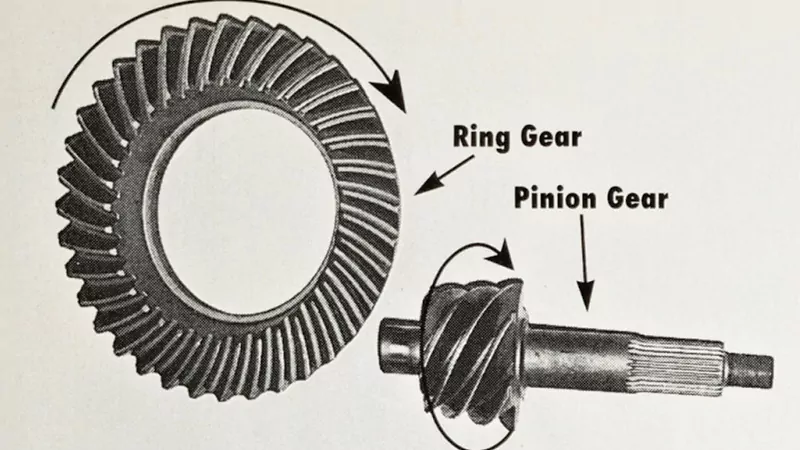The differential gear is an important transmission component in transmission system. It can cause the wheels to rotate at separate speeds, preventing wheel slippage and increasing the locomotive’s stability and durability. The differential gear adjustment is used to synchronize the working of the differential’s many components, ensuring that the locomotive runs smoothly.

Tips for Installing the Gear
- The gear should be cleaned before installation to keep the surface clean and rust-free. The inner ring of the bearing used should be used at the same time. In order to ensure that the front and rear bearings of the driving wheel have the correct clearance during assembly, the actual size of the bearing used should be carefully measured to determine the total thickness of its gasket.
- The bearing should be heated to about 80-94℃ during assembly and gently pressed onto the front bearing neck.
- Tighten the nut behind the driving wheel with a tightening torque between 400-450Nm. The torque required for the gear to turn the driving gear is between 1.0-2.5Nm. Use a spring scale to hook the flange hole, and the flat force of pulling the gear is between 16.34-40.87N.
- After attaching the pinion component to the differential case, mount the ring gear. Clean the connecting bolts and nuts between the ring gear and differential case, then apply threadlocker to the threads. Adjust the axial position of the ring gear so that the gear mesh clearance is between 0.2 and 0.4mm. Then, perform a test run to confirm that the contact pattern is centered on the gear teeth, with a tiny bias toward the toe on the drive side and the heel on the coast side. The contact pattern width should be no less than 7mm.
Adjustment of the Ring and Pinion Gears
- If excessive contact occurs at the tooth tip (on the driven gear side), reduce the thickness of the shims between the bearing seat and the differential housing. If the contact pattern appears near the tooth root, increase the shim thickness. Continue adjusting and testing until the contact pattern is centered on the gear tooth, slightly biased towards the tooth tip, and at least 0.8mm away from the driven gear’s tooth tip. Line contact at the tooth root is not permitted.
- After adjusting the contact pattern, readjust the axial position of the driven gear to maintain the ring and pinion gear mesh clearance between 0.2-0.4mm. At this stage, adjust the nuts with external threads on both ends of the differential assembly to achieve a total rotational torque of 1.5-3.5Nm, and ensure that the lock bolts are securely tightened.
Conclusion
A smooth and reliable differential requires proper adjustment of the ring and pinion gears. Precision in these modifications assures longevity and peak performance, so it’s worth the extra effort.
If you need any assistance with differentials or ring and pinion gears, please feel free to contact us. As a professional manufacturer with extensive experience, we are here to help and welcome your inquiries.



